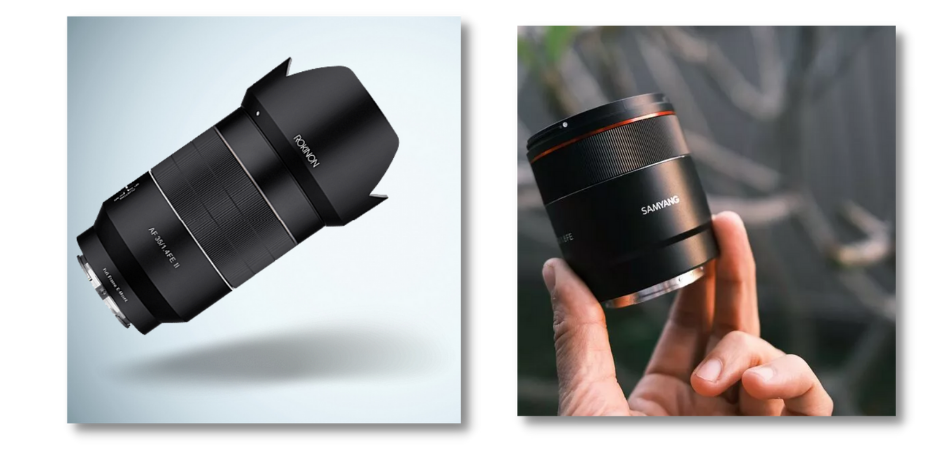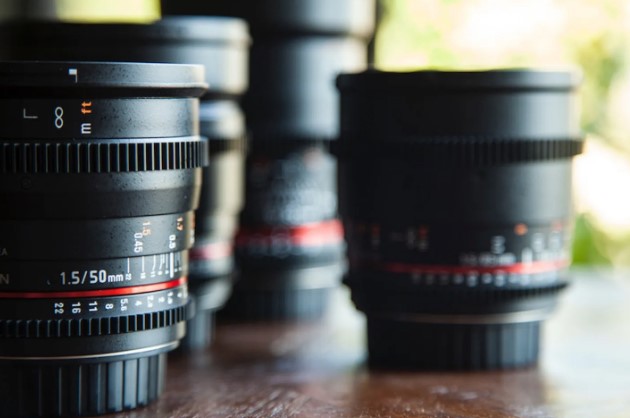The secret to breathtaking photography is investing in a good-quality camera lens. No matter how powerful your camera is, it is completely worthless without high-quality lenses.
Understanding camera lenses is the first step toward improving your creativity in digital photography. However, with the enormous technological advancements in this industry, picking the right camera lens is not a walk in the park, even for pro photographers. It involves a difficult trade-off between lens speed, size, cost, and image quality, among other features.
Leading brands such as Samyang and Rokinon offer plenty of design, features, and prices, making it even harder to choose between them. This shouldn’t worry you, though; in this article, we go to a head-to-head comparison of the Samyang vs. Rokinon camera lenses; we dig deeper to help you understand their differences and similarities. Stay with us.
Samyang vs. Rokinon: A Quick Comparison Chart
Samyang is a product of Samyang Optical, a Korean camera lens company founded in 1973. The company is also the parent company of the Rokinon lens brand.
Samyang lenses are premium-built camera lenses that deliver high-quality images at a higher price.
On the other hand, Rokinon lenses are well known as good value camera lenses that produce good image quality and are relatively low priced.
Here is a summary comparison chart between Samyang and Rokinon camera lenses:
| Property | Samyang Lens | Rokinon Lens |
| Country of origin | Korea | Korea |
| Price | Expensive | Affordable |
| Weight | Heavier | Lightweight |
| Design/built quality | Superior (thick body construction) | Inferior (light plastic) |
| Image quality | High-quality images | Low-quality images |
| Durability | More durable | Less durable |
Samyang Vs. Rokinon: What Are The Similarities And Differences?
Samyang and Rokinon lenses are top-rated brands, well-known for their excellent image sharpness and affordable pricing. Nonetheless, the Samyang vs. Rokinon battle has caused a heated debate on the internet over time. Most photographers find themselves stuck between Samyang and Rokinon brands, not knowing which one to pick between the two.
Below are the similarities between the Samyang and Rokinon lenses:
1. Country Of Origin
Both the Samyang and Rokinon brands are made in Korea. Actually, they are made by the same company, Samyang Optical.
2. Camera Compatibility
Both are compatible with almost all camera brands in the market, including Nikon, Canon, Olympus, Samsung, Sony, etc. For example, if you are looking for a camera lens for Nikon D90, you can quickly get on either brand.
Differences between Samyang and Rokinon lenses:
3. Weight
Weight is an essential comparison factor between these two lenses. A thorough examination shows Rokinon models are incredibly lightweight and easy to move around with. On the contrary, Samyang models are slightly heavier due to their premium build quality.
Keep in mind that the weight of both lenses does not affect their optical performance or image quality.
4. Design and Built quality
I find Rokinon to have a lower quality build as opposed to Samyang with premium build. Rokinon is built from a thin plastic chassis prone to quicker wear and tear.
But, Samyang, on the other hand, is made from a thicker and more robust plastic chassis that guarantees you long life. While Rokinon lenses may not favor photographers who go out a lot and are at a higher risk of dropping their lenses, Samyang lenses are suitable for outdoors and survive a few accidental drops.
5. Image quality
When it comes to image clarity and sharpness, Samyang carries the day. Since Rokinon is a low-budget lens, it does not deliver better images compared to Samyang.
Unlike Rokinon, Samyang has smooth focus rings that provide high-definition images, outperforming the Rokinon brand.
The Samyang brand features an excellent focus mechanism that works with a variety of photographic equipment. It’s crucial to note that the Rokinon lens offers superior image quality as well, although it falls short of the Samyang in this category.
6. Price
A quick look at the market price of these two lenses; you’ll notice that Samyang lenses are usually more expensive than Rokinon. Their price difference is caused by their difference in built material and lens capabilities.
Get to know: How to Remove Scratch from Camera Lens?
Frequently Asked Questions (FAQ’s)
Are Samyang Camera Lenses Suitable for All?
Yes. The Samyang brand offers excellent and high-quality camera lenses. Their Image quality is exceptional, and the price is affordable. However, the only setback is the higher price.
So, if money isn’t an issue, than I recommend choosing Samyang over Rokinon for everyday use.
Do Samyang And Rokinon Lenses Have Autofocus?
Both Samyang and Rokinon camera lenses have autofocus features. They also have models with manual and automatic autofocus.
Are Rokinon Lenses Sharp?
Rokinon lenses are crisp, generate excellent colors, and are pretty inexpensive. For many years, Rokinon has been producing third-party lenses for a variety of systems, providing photographers all over the world with great glass at accessible costs.
Bottom Line
After looking at the Samyang vs. Rokinon lenses comparison, you notice there’s not much difference. Both lenses are manufactured by the same company; and are compatible with most camera brands available.
Rokinon is a lightweight and cost-effective lens ideal for beginner photographers. If you are looking for a budget-friendly camera lens that offers good quality images, Rokinon is a perfect option.
On the other hand, Samyang has shown superiority in several aspects like image quality, design, and build quality. However, it comes with a higher price. So, if you’re a photographer who values quality over price and doesn’t mind spending some extra cash, the Samyang lens will work best for you.
All said, both Samyang and Rokinon are excellent lenses; it all depends on personal preference. In the comment section below, let us know which one is your preferred choice and why you chose it.
Happy photography!!


